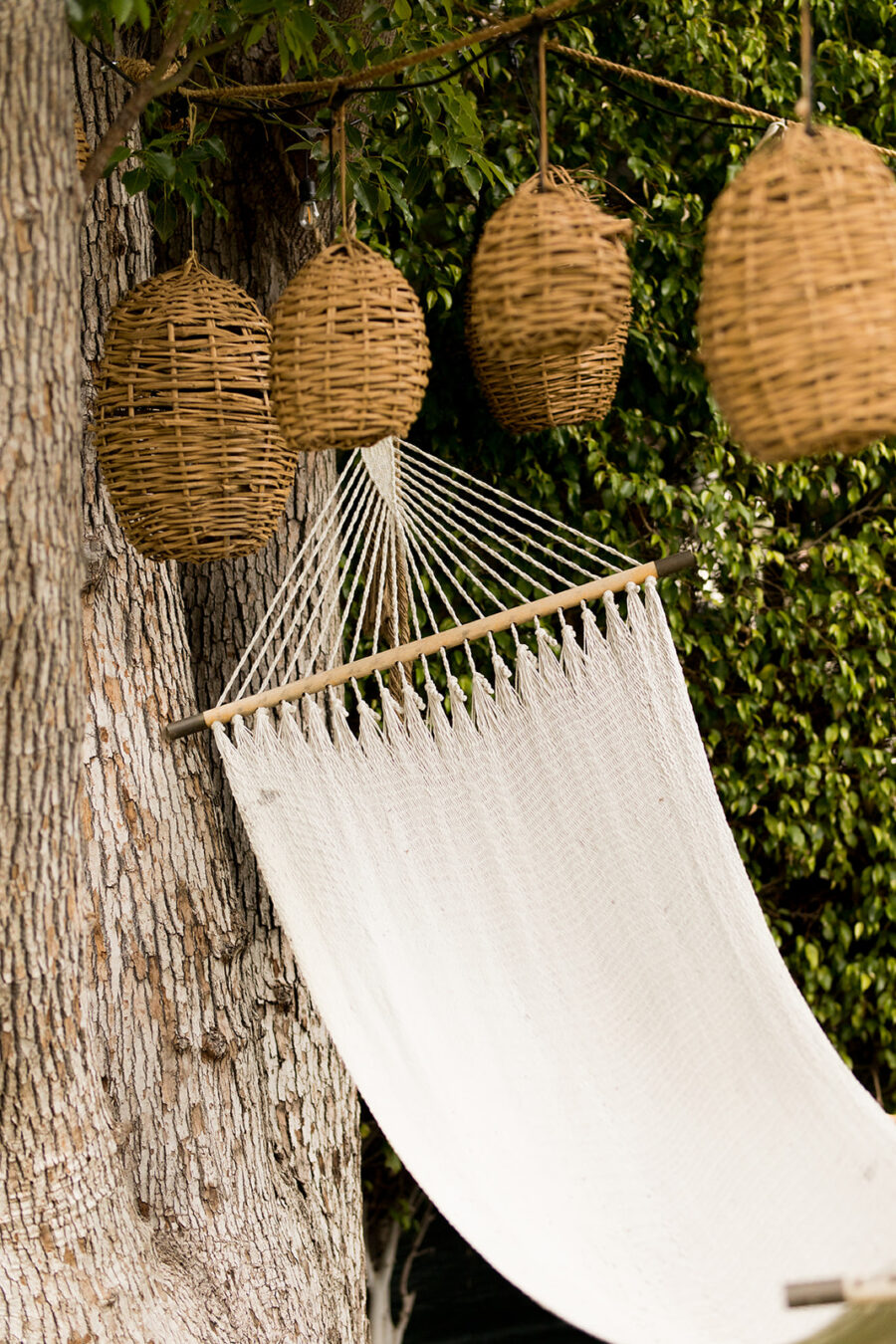
The Best Xeriscape Alternatives To A Traditional Lawn
In a faceoff between nature and a lawn, nature wins every time. Maintaining a lawn is an uphill battle, involving thousands of gallons of water, herbicides, and lawnmowers.
Zoom out beyond your yard to the environment beyond, and headlines are hard to keep up with. Droughts rack the United States yearly, bee populations shrink, and soil quality declines. Cue the eco-anxiety.
But zoom back in—one of the most valuable eco-solutions lurks right in your backyard. And it’s even simpler than going out to water your plants.
That’s the key here, actually—not going out to water your plants at all. Xeriscaping, or eliminating or almost eliminating a property’s need for irrigation, is picking up steam as homeowners respond to droughts, becoming more and more common in places all over the world.
Annually, average American households use around 35,000 gallons of water for outdoor uses, mostly watering lawns—and in arid climates like California, that number can go up to 70,000 gallons. Throughout the country, that’s almost 9 billion gallons of water per day.
And it’s not just about water, says Sorrel Inman, founder of Mergoat Land Design and Restoration. Inman says lawn maintenance accounts for an estimated 90 million pounds of herbicide, more than 800 million gallons of gas, and stormwater runoff that compromises wetland and fish habitats. “One of the greatest acts of conservation the average American homeowner can take is to remove as much of their lawn as possible,” says Inman, and strategically replace it with native plant communities.
“Xeriscaping involves utilizing native species, drought-resistant plants, and landscaping features like mulch to ideally eliminate the need for watering.”
Xeriscaping involves utilizing native species, drought-resistant plants, and landscaping features like mulch to ideally eliminate the need for watering. And when you’re not fighting for a lawn’s survival, you’re not battling weeds with herbicides that can harm other plants and animals and run into the watershed.
Entomologist and author Doug Tallamy says that for a landscape to be sustainable, it must meet four criteria: support pollinators, manage the watershed, support the food web, and sequester carbon. “Lawn does none of them,” he says.
Tallamy is a University of Delaware professor of entomology and wildlife ecology and the author of several books on bio-diversifying lawns, including “Bringing Nature Home” and “Nature’s Best Hope.” He’s also the founder of Homegrown National Park, a nonprofit that encourages landowners to steward their property by planting native.
“[A] lawn will pollute your local watershed, add carbon to the atmosphere, doesn’t support any pollinators, and doesn’t support the food web. It’s a status symbol,” says Tallamy. “It looks nice, and that’s great, but you cannot turn the planet into a status symbol because that’s the end of us if we do.”
You don’t have to completely eradicate your nice green lawn to be a part of the solution, either. Tallamy suggests cutting the grass on your property in half—replacing that space with trees, native plantings, or a small water feature.
Cut the grass on your property in half—replacing that space with trees, native plantings, or a small water feature.
Another way to help your local ecosystem? Participate in No Mow May, an initiative first popularized in the UK to help bees and other pollinators thrive on early-season flowers and grasses. In general, mowing your lawn every other week instead of once a week while also refraining from herbicides has been shown to increase the number of bees supported by the lawn.
Read on for more tips on how to begin xeriscaping your property. Keep in mind that most plants need at least some water as they’re first being established—but with the following tips, soon enough, you won’t have to water your yard at all.
1. Discover plants that are native to your region.
Look no further than native plants for a landscape that doesn’t need irrigation. Look up your Native Plant Society—organized by the American Horticultural Society; every state has one. From there, the organization can tell you which plants are best for your region, your elevation, your side of the mountain or lake, and even the sunny or shady spots in your yard. “You’ve got to go with the ecosystem in which you live,” says Tallamy. “You want the plants to like where they are so maintenance is easy.”
To identify native plants, Inman also suggests walking at a nearby state or national park with a plant identification book or app. Or, head to a nearby nursery and ask for advice. “The folks who run these nurseries are often a wealth of knowledge,” they say. Consider native wildflowers when looking at native plants that specifically support pollinators. And be mindful of where your plants are coming from, too, says Tallamy.
Consider native wildflowers when looking at native plants that specifically support pollinators.
For example, he says, many species well adapted to Mediterranean climates are used in landscaping in the American west—but while they thrive in the similarly warm, arid environment, our insects generally can’t eat non-native plants. Mediterranean plants aren’t supporting the food web part of the equation.
2. Plant a tree (or multiple).
If you live in a climate that supports trees, planting just one or two with a bed around them will reduce your amount of lawn. Tallamy suggests planting an oak tree if they’re compatible with your environment, as oaks are one of the most important keystone plants, or plants the entire ecosystems depend on for survival. These trees sequester carbon, absorb soil contaminants, and can provide nutrients and habitat for thousands of insects, animals, fungi, and other plants.
3. Consider sprawling groundcovers.
Want a yard that still stays low to the ground? Consider groundcover plants like creeping thyme, moss, or clover (which also adds nitrogen to the soil). Research other groundcovers native to your area—some produce beautiful flowers, and some, keep in mind, are too delicate to be walked on. Stay mindful of which areas of your yard get better sun and drainage versus spots that are cooler and more damp.
4. Utilize ornamental grasses.
Depending on the species, ornamental grasses can be drought tolerant and well-suited for sunny, dry areas. Most ornamental grasses don’t spread, so you won’t have to worry about keeping them under control, and as long as they’re native, they shouldn’t need any water—or really any maintenance at all.
5. Install a water feature.
Birds will love a small water feature with circulating water—even a minimal feature, Tallamy says, is a “valuable addition” in desert climates.
6. Add mulch, especially if you have kids.
Mulch helps to retain soil moisture and protect the roots of surrounding plants while adding nutrients to the soil. And if you have pets or children who still need space to play and run around, mulch is a grass lawn alternative that’s excellent at being trampled all over.
7. Build features that retain stormwater.
Inman says one of the worst features of a lawn is that they only retain 10 percent of stormwater instead of a forest’s 80 percent. Features like rain gardens, dry creek beds, and densely planted bioswales and berms (water pools in the swale’s basin, which stores water for plants on the berm) all help direct and store rainwater properly. “The more stormwater you can keep on your property the better!” says Inman.
8. Mow minimally and as needed.
Here’s one of the easiest ways to support a xeric lawn: let native grasses and wildflowers take over parts of your yard, and only mow as needed. Maybe you mow around the grill and the picnic table, then mow a path out to the firepit. The result is much less lawn to water and mow and a dreamy, romantic vibe to your property.
9. Support the environment through container gardening.
No lawn to speak of? Even city dwellers with no outdoor space can help support the environment by container gardening. Continuing to use species that are native to your area, put flowery plants out on the fire escape, on the balcony, or in flower boxes for bees, butterflies, and other pollinators to feast on.
Tallamy says the goal at Homegrown National Park is to help folks understand that anyone can and should play a part in conservation, noting that 78 percent of all land is privately owned. The problem isn’t one any landowner should have to fix on their own.
“When we begin thinking about the ecology of our own homes, aesthetics become a secondary consideration.”
—Sorrel Inman, founder of Mergoat Land Design and Restoration
“Everybody has a responsibility—not just the treehuggers, not just the ecologists, not just the conservation biologists,” says Tallamy. The call-to-action program costs nothing and encourages homeowners to fill their property with native plants and then get on the map of conserved properties.
“When we begin thinking about the ecology of our own homes, aesthetics become a secondary consideration,” says Inman. We might even start to see thriving ecosystems as more good-looking than a clear-cut, crisp lawn. They note that our desire to create a beautiful living space should go hand in hand with our desire to create a beautiful world around us.
The conservation problem is global, but there is quite literally a grassroots solution. “People worry about the whole planet—don’t think about the whole planet,” says Tallamy. “Just think about the piece of the planet you can influence, and that’s your yard. And then it becomes much more manageable.”
Natalie Gale is a Boston-based freelance journalist. When she’s not writing about art, food, or sustainability, you can find her biking to the farmers’ market, baking, sewing, or planning her next Halloween costume. Say hi on Instagram!




